The Derry Riots of 1920
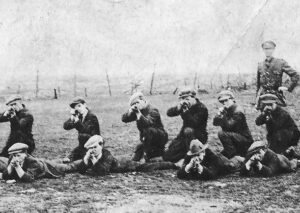
By Patrick Concannon
On 12th August 1969 Derry City exploded into violence and running battles that would eventually become known as the Battle of The Bogside after the Annual Relief of the City Parade held by the Apprentice Boys. This rioting lasted for three days and is widely seen as the start of the Troubles or Northern Ireland conflict.
What is less well known, however, is that almost fifty years previously, in June 1920 Derry saw a far bloodier spate of communal rioting and confrontation between Unionists and Nationalists; a full week of bloodshed which would result in the deaths of twenty civilians.
It has become known as the Derry Riots although it was more akin to outright civil war played out in the same streets and alleyways that would become so prominent in 1969. The Riots were a culmination of tensions within the Derry area which had been simmering for some time.
Derry in 1920
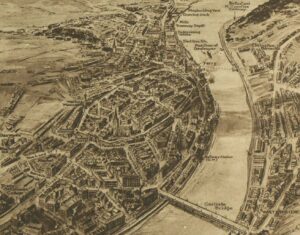
By 1920 Derry City had a population of around 40,000, of whom 56% were Catholic and 44% Protestant. (1) While the West Bank of Derry is overwhelmingly Catholic and Nationalist today, in 1920 it was a largely mixed area, although still predominantly Nationalist.
Derry City had a Sinn Fein M.P, Eoin MacNeill who had been elected at the 1918 election defeating Robert Anderson the Irish Unionist candidate by 315 votes. The Derry Corporation however was held by Unionism up to 1920. (2)
This would change in January 1920 when elections to the corporation took place. Nationalists and Republicans by a majority of 21 to 19 took victory and duly elected a Nationalist Mayor of Derry, Hugh C. O’Doherty.
In the January 1920 local elections, nationalists took control of Derry city Corporation for the first time.
O’Doherty was an Independent Nationalist and Solicitor who had broken with the Irish Parliamentary Party over their acceptance of partition in 1916.
This victory was a hammer blow for the Unionists of Derry who had seen for the first time Nationalism holding power within the Corporation. To Unionists the city was of massive symbolic importance, of course being the location of the siege in 1689, in which Protestant Williamites had held out against the Catholic Jacobite army, and which was, and is, commemorated every year by the Apprentice Boys.
The Londonderry Sentinel, a local Unionist paper in its editorial saw the result as a victory for Sinn Fein and declared:
“We regard it as very deplorable by the adverse result in the South-East ward control of civic affairs in Londonderry passes to the majority of Sinn Fein Nationalist Corporators”. (3)
The Irish News maintained that the loss of unionist ascendency in ‘The Maiden City’ signalled an end of partition as an argument. Unionist fears were hardly assuaged when the new Mayor in his inaugural speech declared:
“Is it not time that you reconsidered your position in relation to your countrymen; that you came to the conclusion that you owe your allegiance to this land of your birth, and that you should no longer play the part expected of you by English politicians but join with your fellow-countrymen in demanding that the government of this country shall be by Irishmen in the sole interests of Ireland.”
O’Doherty finished his speech by stating:
“Ireland’s right to determine her own destiny will come about whether the Protestants in Ulster like it or not”. (4)
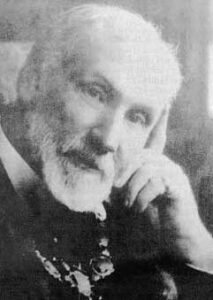
Rising Tensions
The first IRA volunteer to be killed in Derry was Dan McGandy, a local Postman. McGandy it is alleged was surprised by the British Army whilst in the process of removing grenades to transport across the city.
He was found drowned one week later but IRA volunteers and his family maintained he had been purposely drowned in the Foyle despite his inquest returning a verdict of suicide. Liam Brady a Fianna Officer in Derry at the time remembered:
“The most important person on those raids was a young chap called Dan McGandy a strong well built young man……….. As he entered Craig’s yard not knowing that a Military Guard had been stationed there from the night previous he was immediately set upon and a fight ensued, In the struggle McGandy was pushed out into the River Foyle. Two English soldiers fell in at the same time and the struggle continued in the water. McGandy exhausted sank and the two soldiers were taken out of the water and despatched to England the next day to avoid an inquiry” (5)
This had occurred within one week of Hugh C. O’Doherty being elected Mayor and also coincided with the RIC carrying out extensive raids across the city recovering a quantity of ammunition, revolvers and hand grenades.
In the early summer of 1920 it became clear that both unionists and nationalists in Derry were stockpiling weapons.
These raids were carried out in the Nationalist areas of the city and despite assumptions that these weapons were Republican it was the case that some of the weaponry was actually Ancient Order of Hibernian (AOH) arsenal.
The AOH- a Catholic only fraternal organisation that supported the Irish Parliamentary Party- for the most part formed the bulk of the Catholic ex-Servicemen Association which would play a prominent role in future months. (6)
The newly elected Mayor would also cause some controversy when he refused to attend any function where the Royal Toast was to be made. He also proposed that the flying of any flags from the Council would cease so that the citizens could identify with the new Council.
Added to that, he also voted for a Sinn Fein motion to remove the Lord Lieutenant Sir John French as a freeman of the city, principally for his actions during the Easter Rising, declaring French to be overtly hostile to the majority of Derry’s citizens.
Escalating Conflict
Such was the tension within the City that the St. Patrick’s Day Parade was cancelled and in April the city was awash with military fearful of a surge in Republican activity in the area over the Easter period. Armed troops were posted throughout the city and approach roads.
On 14th April large crowds gathered in Derry to celebrate the release of republican prisoners from Mountjoy Gaol in Dublin, who had been freed after a mass hunger strike. The crowd almost immediately began to attack the RIC and military with stones and other missiles, after which, two companies of the Dorset Regiment was despatched to disperse the rioters.
The soldiers opened fire on the crowd with blanks, dispersing the majority although a few remained. The Dorsets then fired live ammunition at those remaining who had been singing songs and flying flags. Three civilians were wounded, one an ex-Serviceman. (7)
In May 1920 the first policeman was killed in the city.
Elements of the crowd, having been driven from the city centre, made their way into Bishop Street and the interface with the Fountain, a Protestant enclave, where rioting commenced between rival Nationalist and Unionist factions. A number of properties were destroyed and a number of soldiers and RIC policemen were injured.
Worse was to come in May when after skirmishes a Unionist group entered Bridge Street firing revolvers before being driven back by a Police charge. However as the Police charge occurred, a shot rang out and Detective Sergeant Denis Moroney fell mortally wounded.
He was the first Policeman to be killed in Ulster and his death was believed to have been caused by an IRA sniper. However some IRA Volunteers later told the Bureau of Military History that the IRA was not responsible. (8) It is possible the AOH fired the fatal shot.
Unionists with their faces blackened and others with masks also took control of Carlisle Bridge, the forerunner to the Craigavon Bridge. All those intending to pass were harassed and some were beaten. This violence went on sporadically for weeks in the city. (9)
Civil War on the Streets
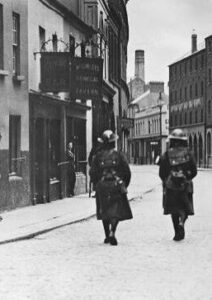
Rioting and confrontation occurred on 18th June in the Waterside area of the city. The Londonderry Sentinel held Sinn Fein responsible for the outbreak of violence and the injuring of civilians:
“The Trouble originated with an unprovoked attack on a Unionist on Friday night by Sinn Feiners in the neighbourhood of Cross Street ,in the Waterside. Yesterday morning large parts of armed Sinn Feiners at the head of John Street fired a bullet that hit a Mrs. Moore”. (10)
The next day saw an explosion of violence. After some skirmishes in the Bishop Street area of Derry, Unionist snipers took up tactical positions and began firing into the Nationalist neighbourhoods.
The violence was organised by the Ulster Volunteer Force (UVF) who had reformed in the city. The Unionist mob eventually proceeded into the Diamond area of the city centre firing at a Nationalist crowd who had gathered to watch the disturbances. The Derry Journal reported:
“While these horrifying scenes were being enacted the shooting had attracted a large crowd to the Diamond. There angry interchanges between rival parties led to some exciting incidents with one of the four armed Policemen on duty phoned for assistance”. (11)
Fierce fighting broke out in Derry on June 18 when unionist snipers took up positions in the city centre and began firing on nationalist neighbourhoods.
Liam Brady also remembered the IRA receiving information that an attack was imminent the day before the outbreak:
“On Thursday June, 18th, 1920, a Protestant gentleman sent word to a Republican Officer that the Dorset Regiment were handing over rifles and ammunition to a certain section of the Unionists so as to create trouble and if possible a civil and religious war. The Republican Officer thought that the story was too fantastic and dismissed it as such.” (12)
Figure 4. Ferryquay Street in 1920. The Diamond Hotel was located just past the Ferryquay Gate on the left hand side.
The firing into Catholic neighbourhoods soon began to cause casualties. James McVeigh was the first person to be killed in the shooting. He had been standing at the corner of Bishop Street and Long Tower when struck by a bullet. The Derry Journal reported:
“A bullet struck poor McVeigh in the throat, the poor man staggered a couple of yards towards Mullan’s public house on the other side of the street where he fell bleeding profusely from the wound in his neck. He lay dying in a pool of blood for ten minutes, no one daring due to the tremendous fire, to approach him as he lay dying in agony”.(13)
A local man named Robert Rankin was eventually charged with his murder. (14)
When Thomas Farren of Long Tower Street attempted to leave his home he was shot dead by a Unionist sniper in his doorway. One bullet struck his hand, the other his stomach, disembowelling him. (15) Others were more fortunate as the bullets meant for them missed their target.
Edwin Price who had served in the 36th Ulster Division during the War was killed when caught up in the violence. He had been visiting his brother in Derry when shot outside the Diamond Hotel. Price was struck in the stomach and died of internal haemorrhage.
John Gallagher was also shot dead by a Unionist sniper as he made his way along Clarendon Street. He managed to drag himself to the nearby infirmary but was died soon after. (16)
Patrick Mallet of Daenery Street was shot in the abdomen as he was walking up Long Tower Street and died a few days later from his injuries whilst Thomas McLaughlin was shot and killed at Fahan Street. The fatal gunshot had been fired from the Diamond area whilst McLaughlin had made a dash through Butcher Gate towards Fahan Street. (17)
Eventually the Unionist gunmen were pushed back into the Fountain by a detachment of the Dorset Regiment which had been dispatched and arrived at the scene around 11pm.
However a second Unionist mob had also attacked Bridge Street, Carlisle Road and Long Tower whilst Nationalist crowds gathered in Waterloo Place holding up pedestrians. Unionists were beaten and two were shot and wounded. Some shops in William Street were also set on fire. Elsewhere in Ferryquay Street groups of women became engaged in hand to hand fighting. (18)
Nationalist gunmen in Derry comprised not only the IRA but also Catholic ex-servicemen and Hibernians.
Alfie McCallion and Michael Sheerin, two local IRA Volunteers were walking in the Bishop Street area when they heard gunfire as Sheerin recalled:
“In June 1920, I remember walking up Bishop Street with Alfie McCallion one evening. We heard a volley of shots coming from Fountain Street into Bishop Street. We were walking towards the scene of the shooting and when we arrived we heard some people had been killed and wounded. We decided to exploit the situation and to mobilise the unit. It assembled that night in Shamrock Hall. The unit paraded and proceeded to St. Columb’s College”. (19)
At St. Columb’s College the IRA were welcomed by the Dean and President as local Volunteer Michael Sheerin remembered:
“On our arrival at the College we were welcomed by the Dean, Fr. James McGlinchy, and the President, Dr. McShane. Both these priests were in the Sinn Fein organisation and were two fine Irish priests.” (20)
The next day was generally quiet although James Doherty of Tyrconnell Street was shot dead by a Unionist gunman at 5:30am whilst attending the wake of victim Thomas Farren. Doherty was standing outside the door when two men fired shots and he fell mortally wounded, dying within ten minutes.
The Violence Continues
On Monday a party of IRA volunteers led by Patrick Shiels advanced from Waterloo place into the Diamond area. As Liam Brady recalled:
“On Monday morning around 11am Patrick Shiels, a Republican officer came marching up Waterloo Place with a group of armed men, numbering around 12. Three had rifles, the rest revolvers. When they got to Butchers Gate, each man fired a shot in the direction of the Diamond where armed Orangemen had installed themselves. Believing they were under attack by a large number of IRA, the Orangemen, without returning fire retreated up Bishop Street, over London Street and back into the Fountain”. (21)
Accompanied now by a large group of Catholic ex- Servicemen, this essentially pan- Nationalist grouping took up positions within the school in an attempt to dislodge the Unionist snipers operating from various vantage points in the city centre. As Liam Brady recounted:
“The snipers on Sam Taggart’s flat roof, John Street, controlled a commanding position of the Bridge, John Street, Foyle Road, Abercorn Road, foot Of Bridge Street, and part of Foyle Street. The snipers on the roof of Frew’s Hotel, Carlisle Road, controlled 49. Orchard Street, part of Bridge Street, Market Street and a large portion of Derry Walls. The Snipers on Walkers Monument, the Protestant Cathedral, Bishop Street, the Orange Hall and the Mosonic Hall, Magazine Street, and had a commanding view over most of the Nationalist area of the city and things were such that for a time the city was completely in the hands of the Orangemen.” (22)
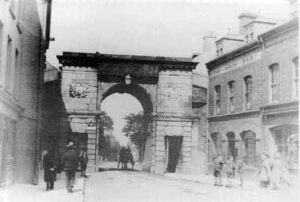
Paddy Shiels took command of the pan Nationalist group whilst Dublin IRA leaders Dick McKee and Peadar Clancy, later murdered by the British in the aftermath of Bloody Sunday, also entered the city later in the week to lend support as did local M.P. Eoin MacNeill. (23)
More civilian fatalities occurred as the fighting continued over the next few days. Peter O’Kane and Patrick Plunkett were both shot dead in separate incidents. James O’Kane was also shot and fatally wounded during rioting.
Ten year old orphan George Caldwell was shot by a Unionist sniper as he popped his head out of a window in Nazareth House whilst Joseph McGlinchey, aged 15 and son of former Volunteer Commandant Charles was also shot dead by a Unionist sniper. His gravestone states he was ‘shot by Loyalist Paramilitaries for removing a Union Flag at Bishop’s Gate, Derry’.
Gun battles continued for a week in the city until British military reinforcements were called in from Belfast.
Protestants were also however killed in the violence. The son of the Governor of the Apprentice Boys, Howard McKay was taken by a Nationalist mob in the Lone Moor Road area of the city, put against a wall, blindfolded then shot dead.
A large crowd had gathered at the scene where it is believed the IRA carried out his execution style murder in broad daylight. McKay had just arrived in the city and was making his way to the outskirts to his Father’s home. Lieutenant-Colonel Wilfred Ashley stated in the House of Commons:
“I would draw attention to a most foul crime……it is more worthy of darkest Africa or some savage Asiatic potentate. Let me read the first paragraph: Most tragic of all was yesterdays shooting of a young man named Howard McKay, son of the Governor of the Apprentice Boys. Mr. McKay had been on holiday, he was not in uniform. He was not a resident. He only arrived in the city yesterday afternoon. He was on his way to his father’s residence on the outskirts of the city when he was seized by armed Sinn Feiners, bound with ropes and shot dead. The body lay on the roadside for several hours”. (24)
James Dobbin, also a Unionist was shot in John Street and thrown into the River Foyle. He struggled in the water and two local Postmen were prevented from rescuing him. He was eventually dragged onto a boat by two Policemen but died nine days later. Medical evidence at his inquest suggested his back was broken, he had scalp wounds and a large bullet exit wound on his back. (25)
Much of Derry by this stage resembled a war zone. By midweek the IRA had displaced most of the Unionist snipers whilst the Catholic ex-Servicemen patrolled and defended Nationalist areas. Despite this Catholic families had been forced from their homes in Carlisle Road, Abercorn Road and Harding Street. For the most part Protestant homes were untouched.
However according to Liam Brady in his BMH statement feelings in Nationalist areas were running high and the IRA were forced to dispatch Volunteers to protect some Unionist shops with hurling sticks:
“In the meantime the Nationalist population had reached the end of their endurance and small sections were preparing to attack Unionist shops but the I.R.A. sent men armed with hurley sticks to guard all Unionist sops and people who would be likely to be attacked, while in the Unionist districts no such protection was given to Nationalists. “ (26)
Despite the displacing of Unionist snipers from their positions firing continued mainly from the Fountain area with the IRA largely operating around St. Columb’s College. William Rankin, a Unionist was shot dead by the IRA whilst standing near a barricade in Barrack Street whilst in the Waterside area John McKinney was shot at Clooney Terrace, dying the next day from his wounds. (27)
Twenty people were killed in the violence and hundreds more wounded.
By the end of the week the British military had regained some control of the situation although Republicans claimed the Army had only intervened when the IRA had begun to gain the upper hand. As Seamus McCann remembered:
“It was only when the Volunteers had got into a position which enabled them to hit back with effect that military reinforcements were sent into Derry. The British military authorities, strange to say, didn’t adopt an impartial attitude in their efforts to stop the riots. In every instance where they interfered, their attention was always directed towards the Nationalist area”. (29)
As it was, 20 people lay dead, fifteen Catholics and five Protestants.
The IRA and Catholic ex-Servicemen had dispersed when word of the troop dispatch from Belfast had arrived. According to Michael Sheerin:
“We got information later that a large British force had arrived in Belfast and were actually on their way to Derry. This eventually transpired to be a battalion of the Dorsetshire Regiment with an armoured corps attachment.
We procured some bombs and inflammable material and planned to attempt to occupy the section of the city west of the river. Whilst these arrangements were under way the British brought the Dorsets and their attachments into action.
The armoured cars encircled our positions and by machine-gun fire destroyed most of our street barricades. Those barricades were made of sandbags, flour bags, sugar bags, etc. which machine-gun fire reduced in a very short time. Eventually the personnel manning the outer defences who were mainly ex-British soldiers with a national background were dislodged and came into the College, handed over their arms and were sent home. The Dorset’s then fired machine guns at the windows of the College, we then evacuated”. (30)
A curfew was imposed on the city although a considerable amount of looting took place, especially at Watts Distillery which was a world renowned Whiskey distillery based in the Bogside.
However an uneasy peace held in the city although the week’s fighting was the most intense the city had ever seen.
Conclusion
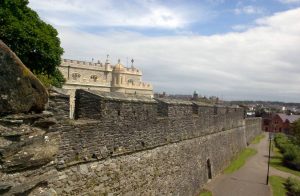
The Riots in Derry in 1920 did not occur in a vacuum and the first six months of 1920 had seen tensions in the city simmering before exploding into a bloody conflict by the end of June. These tensions were underpinned by the developing Political situation and the looming partition of Ireland.
Derry in this period was however not a Republican city and the IRA found it difficult to operate in the area. However the outbreak of sectarian violence led to an upsurge in both support for the IRA and the UVF. Both sides had been involved in ferocious street fighting.
The level of violence witnessed in June 1920 would only be rivaled by the extreme communal violence witnessed in the early 1970s, after Internment and Bloody Sunday. Indeed a ‘Protestant exodus’ occurred from the Cityside area of Derry at this time. (31)
The level of violence witnessed in June 1920 would only be rivaled by the extreme communal violence witnessed in the early 1970s.
Despite the Nationalist majority in Derry, despite the Nationalist majority Corporation which was still pledging allegiance to the Dail right up until 1923 and despite a Sinn Fein MP Derry City was still subsumed into the Northern Irish state. The Boundary Commission in 1925 cemented partition and saw Derry become a city of discrimination and gerrymandering with Unionists back in control of the corporation via redrawn city boundaries .
The Derry riots of 100 years ago may be forgotten now, overshadowed by our more recent conflict but for one week in June 1920 Derry was at the forefront of the War of Independence.
References:
- 1. Lynch, The Northern IRA and the Early Years of Partition.
- 2. See 1918 Election Results here https://en.wikipedia.org/wiki/Londonderry_City_(UK_Parliament_constituency)
- 3 Okan Ozseker, Forging the Border: Donegal and Derry in Times of Revolution , 1911-1940
- 4. Gallagher, Violence and Nationalist Politics in Derry 1920-1923 p.16
- 5. Liam Brady BMH WS #676
- 6. Gallagher, Violence and Nationalist Politics in Derry 1920-1923 p.19
- 7. Grant, Derry The Irish Revolution 1912-1923 p.98
- 8. Liam Brady BMH WS #676
- 9. Grant, Derry The Irish Revolution 1912-1923 p.100
- 10. Okan Ozseker, Forging the Border: Donegal and Derry in Times of Revolution , 1911-1940
- 11. Derry Journal 22nd June 1920
- 12. Liam Brady BMH WS#676
- 13. Derry Journal 22nd June 1920
- 14. Grant, Derry The Irish Revolution 1912-1923
- 15. For more information on those killed see here, http://www.irishmedals.ie/Civilians-Killed-WOI.php
- 16. http://www.irishmedals.ie/
- 17. Derry Journal June 22nd 1920
- 18. Grant, Derry The Irish Revolution 1912-1923
- 19. Michael Sheerin BMH WS # 803
- 20. Michael Sheerin BMH WS # 803
- 21. Liam Brady BMH WS# 676
- 22. Liam Brady BMH WS# 676
- 23. Okan Ozseker, Forging the Border: Donegal and Derry in Times of Revolution , 1911-1940
- 24. Hansard, House of Commons Debate 22nd June 1920
- 25. http://www.irishmedals.ie/
- 26. Derry Journal 25th June 1920
- 27. Derry Journal 25th June 1920
- 28. Grant, Derry The Irish Revolution 1912-1923
- 29. Seamus McCann BMH WS# 763
- 30. Michael Sheerin BMH WS # 803
- 31 For more information on the Protestant exodus see here https://www.patfinucanecentre.org/sites/default/files/2018-03/Migration%20Report%202018.pdf